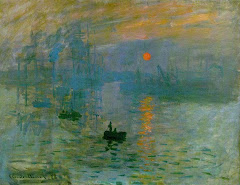Bibliographic reference :
STENKEN Julie. Adapting the Chemical Analysis of Paintings in the Context of Art conservation to a Project-Based Learning Instrumental Analysis Laboratory.
Available at : asdlib.org/onlineArticles/elabware/StenkenPBLArt.pdf
Extract :
"Outline of Analytical Methods used for Paint Analysis.
Paintings can be analyzed for their molecular content by using a variety of different instrumental methods of analysis [13]. The principal methods applied to paintings are chromatographic and spectrometric. Chromatographic analysis of paintings can involve the use of thin-layer chromatography (TLC), gas chromatography (GC) and liquid chromatography (LC). TLC is typically only used to obtain rapid information about a particular class of analyte being present in the painting. The lack of resolving power forces the use of GC and LC methods for separation and quantitative analysis"
Dublin Core Metadata :
Title : Adapting the Chemical Analysis of Paintings in the Context of Art conservation to a Project-Based Learning Instrumental Analysis Laboratory.
Creator : STENKEN Julie
Subject : art paintings/ content analysis/ chemical analysis/ art conservation
Description : « This manuscript is envisioned as a “living” progress report for my attempt at Rensselaer Polytechnic Institute to use art conservation methods as a means to help better teach analytical chemistry. The intent is to update this manuscript and web site as a means to provide additional information about what works and what does not work with respect to project based learning with this approach in the Instrumental Methods of Analysis laboratory. This report gives a brief introduction to the chemistry of paintings. Additionally, the different instrumental approaches commonly used to identify various chemical components of paintings are described. Next, this report describes a recent effort at Rensselaer Polytechnic Institute to bring project-based learning to the upper-level instrumental analysis laboratory. The molecular analysis of a painting (The Buffalo Room, by Robert Chanler) that needed to be conserved was used as the basis for this project. The unique chemical qualities of paintings that make this type of chemical analysis highly challenging are described. Finally, lessons learned from our first attempt to bring forth this type of learning to our students are described. »
Publisher : Department of Chemistry and Chemical Biology, Rensselaer Polytechnic Institute,
Date : None
Type : Text
Format : Pdf
Identifier : asdlib.org/onlineArticles/elabware/StenkenPBLArt.pdf
Source : None
Language : En
Coverage : International
Rights : Institut Department of Chemistry and Chemical Biology, Rensselaer Polytechnic Institute,
lundi 3 mars 2008
Adapting the Chemical Analysis of Paintings in the Context of Art conservation to a Project-Based Learning Instrumental Analysis Laboratory.
Libellés :
art conservation,
art paintings,
chemical analysis,
content analysis
Inscription à :
Publier les commentaires (Atom)




Aucun commentaire:
Enregistrer un commentaire